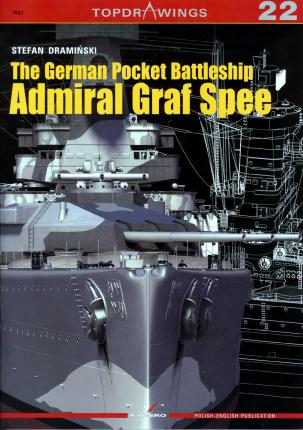The Deutschland-class ships were the first heavy vessels of the German Navy after the First World War. In Germany they were classified as “Panzerschiffe”, but in other countries the term “pocket battleships” was very popular. The third and last vessel of this class was Admiral Graf Spee. She was laid down on 1 October 1932, launched on 30 June 1934 and commissioned on 6 January 1936. During the Spanish Civil War the ship patrolled coastal waters of this country. Before the outbreak of the Second World War, on 21 August 1939 the ship steamed out for the Atlantic. From 26 September she was fighting Allied shipping, sinking nine British vessels. On the morning of 13 December Graf Spee encountered a group of Allied warships (the heavy cruiser HMS Exeter and light cruisers HMS Ajax and HMNZS Achilles) near South American coast. The gun battle that ensued went to the history as the Battle of the River Plate. Both the Exeter and her German enemy were damaged during the course of the engagement. The commander of Graf Spee, Kapitän zur See Hans Langsdorff decided to break off the battle and enter the nearby port of Montevideo in Uruguay. According to the international law the German corsair could not stay in a neutral port longer than 72 hours. Convinced that massive British forces were concentrating in the vicinity and hence the escape was impossible, Langsdorf decided to save the crew and scuttle the ship. On 17 December Admiral Graf Spee steamed to the roadstead and there the explosive charges were fired. The German ship sunk in shallow waters and her commander shot himself three days later in a hotel in Buenos Aires. The wreckage was penetrated even during the war by British divers in order to recover more valuable items and obtain information about German technology. In the post-war years many single parts of the ship were recovered.
Format :A4
23 pages of modeling plans,
4 pages color profiles
2 double B2 sheet with drawings sheets and colour scheme.
booklet binding









